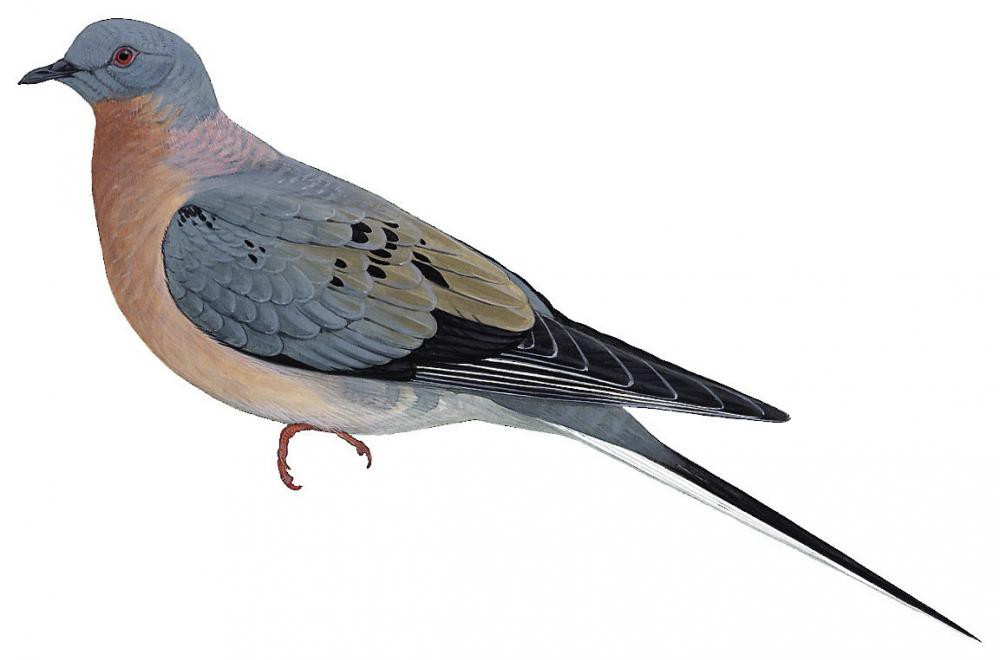Passenger Pigeon / Ectopistes migratorius

Passenger Pigeon
SCI Name:
Protonym: Columba migratoria Syst.Nat.ed.12 ed.12 p.285
Taxonomy: Columbiformes / Columbidae / Ectopistes
Taxonomy Code: paspig
Type Locality: North America = South CaroUna, ex Catesby, 1, p. 23, pi. 23.
Author: Linnaeus
Publish Year: 1766
IUCN Status: Extinct
DEFINITIONS
ECTOPISTES
‡ (Columbidae; Ϯ Passenger Pigeon E. migratorius) Gr. εκτοπιστης ektopistēs wanderer, migrant < εκτοπιζω ektopizō to migrate, to go abroad; "ECTOPISTES ... Bill slender, notched. Wings rather elongated, pointed, the first and third quill equal, the second longest. Tail rounded, or cuneated. Feet short, naked, anterior scales of the tarsi imbricate; lateral scales very small, reticulate. Types. Col. speciosa? Temm. 2. Col. migratoria. Linn. Inhabits America." (Swainson 1827); "Ectopistes Swainson, Zool. Journ., 3, 1827, p. 362. Type, by subsequent designation, Columba migratoria Linné (Swainson, Classif. Bds., 2, 1837, p. 348.)" (Peters, 1937, III, p. 82). The countless migrant flocks of the Passenger Pigeon were harried by hunters to a level where no viable breeding populations of this colonial nester could exist, and the slide towards extinction became inevitable.
Var. Estopistes, Extopistes.
Synon. Trygon.
migratorius
L. migratorius migrant, migratory < migrator, migratoris wanderer < migrare to migrate.
● ex “Pigeon of Passage” of Catesby 1731 (‡Ectopistes).
● ex Sylvia vermivora A. Wilson, 1811 (syn. Helmitheros vermivorus).
● ex “Turdus pilaris migratorius. Fieldfare of Carolina” of Catesby 1731, and “Turdus canadensis” of Brisson 1760 (Turdus).
Migratorius
(syn. Monticola Ϯ Blue Rock Thrush M. solitaria) L. migratorius migrant, migratory < migrator, migratoris wanderer < migrare to migrate; "On m'excusera certainement de ne pas parler du Merle azuré, de Crespon, auquel personne n'a cru; et, encore mieux, de taire le nom de Migratorius, qui m'a appris, une fois de plus, à me tenir en garde contre certaines assertions qui ne sont pas immédiatement accompagnées d'une preuve palpable" (Jaubert 1854).
UPPERCASE: current genus
Uppercase first letter: generic synonym
● and ● See: generic homonyms
lowercase: species and subspecies
●: early names, variants, mispellings
‡: extinct
†: type species
Gr.: ancient Greek
L.: Latin
<: derived from
syn: synonym of
/: separates historical and modern geographic names
ex: based on
TL: type locality
OD: original diagnosis (genus) or original description (species)












